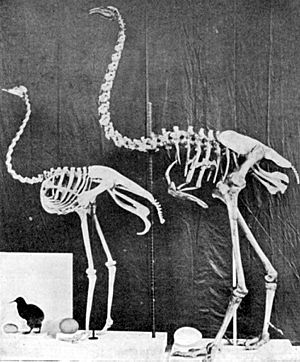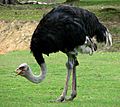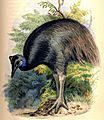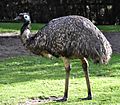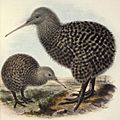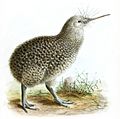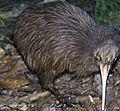Ratite facts for kids
Quick facts for kids Ratites |
|
|---|---|
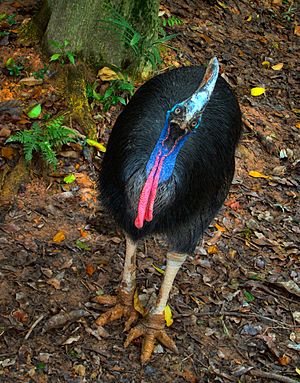 |
|
| Southern cassowary (Casuarius casuarius) | |
| Scientific classification | |
| Orders | |
|
Struthioniformes ostrich |
|
| Synonyms | |
|
Grallae Linnaeus, 1760 |
The ratites are a group of birds that are usually medium to large in size. Most of them cannot fly. Many of the largest ratites, like the giant moas and elephant birds, are now extinct.
Unlike other birds that cannot fly, ratites do not have a special bone called a keel on their sternum (breastbone). In birds that can fly, this keel bone helps anchor their strong wing muscles.
Most parts of the super-continent called Gondwana once had ratites. Their closest living relatives are the tinamous, which live in South America.
What are Ratites?
The ratites include well-known birds like ostriches, rheas, cassowarys, emus, and kiwis. It also includes birds that are now extinct, such as the moas and elephant birds.
These birds are known for their large size and their inability to fly. They have strong legs for running or walking.
How Ratites Evolved
Scientists once thought that all ratites came from one common ancestor. They believed this ancestor lived in Gondwana, a huge ancient continent. The idea was that as Gondwana broke apart, the ratites on each piece of land evolved differently. These pieces of land became the southern continents we know today, plus Africa and India.
However, modern DNA studies have changed this idea. DNA analysis shows that ratites separated from each other more recently than the breakup of Gondwana. This means they might not all share a single common ancestor from that time.
Interestingly, DNA studies show that rheas from South America and the ratites from Australasia and Oceania (like emus and cassowaries) are closely related. They do share a common ancestor.
The Mystery of Flight
Recent studies of bird genes suggest something surprising: the tinamous, which can fly (though not very well), are actually part of the ratite family. This means that the group we call 'ratites' might not be a single, unified group that all lost flight in the same way.
If tinamous are part of the ratite family, it suggests that ratites lost the ability to fly at least three different times in their history. It's also possible that tinamous re-evolved the ability to fly, but losing flight is much more common in bird evolution than gaining it back.
So, the similarities between Ostriches and the Australasian ratites (like emus) are likely due to convergent evolution. This means they developed similar features independently, rather than inheriting them from a single flightless ancestor.
Images for kids
See also
 In Spanish: Ratitae para niños
In Spanish: Ratitae para niños


